Apart from a worry that Covid could spike again we are all approaching normality but at least as a result of the pandemic we have adopted better precautions at safeguarding ourselves such as hand washing and wearing face masks in shops and these measures will continue at least until a vaccine is found . I visited a garden last week within a group of five friends and even though we were outdoors all apart from two wore a face mask … I choose not to wear a face mask as I still draw the line at outdoor use in lots of space among people I know , who are not twenty five and attending rave or hip hop parties !
Now that we have time to evaluate the Covid and our national responses world wide to it there are radical views and opinions emerging such as the recent book by the important French philospher , Bernard – Henri Levy called The Virus in the Age of Madness … I have not read the book which has just been published but the Sunday Times of July 26th 2020 did an article on it . Basically Levy thinks ” there seems to be a collective desire to panic . It is not as big a disaster as we think ” .
I must say I agree with a lot of what he says as for example “we did not have to destroy human contact , snitch on our neighbours , hand over political leadership to doctors and watching the spectacle of world leaders so terrified of the corona that they deemed to put the world on hold caring little for the outbreaks of hunger , violence against the poor and authoritarian takeovers that were sure to follow ” .
Levy does not argue against a lock down just that in doing so we went totally overboard and allowed the threat of the virus to take away our enjoyment of life , the simple fact of a hand shake on greeting and most of all leaving people to die alone without a loved one by their side where he says ” your family being around – this belongs to the history of mankind . I believe we went too far , we should have authorised those who wanted to take the risk to escort the loved one to death .”
The July Garden
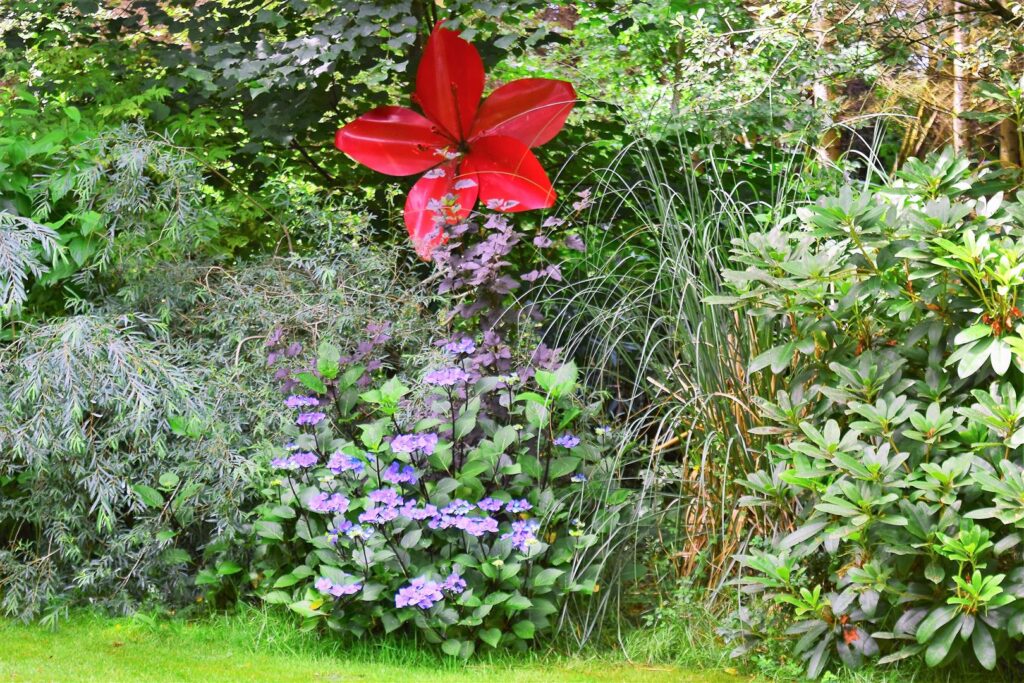
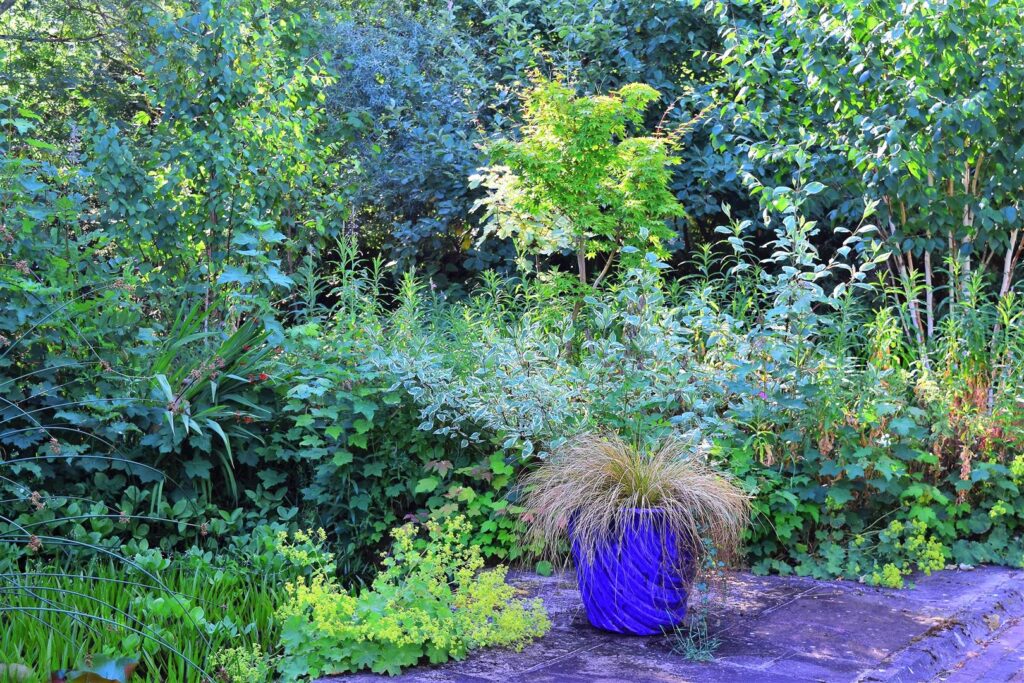
I have always loved the dramatic effect of cannas with their large purple leaves but have not had great success in growing them here as they don’t overwinter in our wettish soil but I bought two recently and will give them another go and even if I have to treat cannas like annuals I am prepared to do so as I really like them . I planted these cannas in two locations in pots where I would pass them every day and got such pleasure from them that I have decided in future each year to plant up some pots with summer flowering perennials which can be problematic in the ground such as agapanthus and cannas as Helen Dillon does in her garden where she constantly moves tender plants like cannas and agapanthus in pots in and out of the border — and as Monty Don said on Gardener’s World a few weeks ago ” if it is good enough for the great Helen Dillon it is good enough for me “.
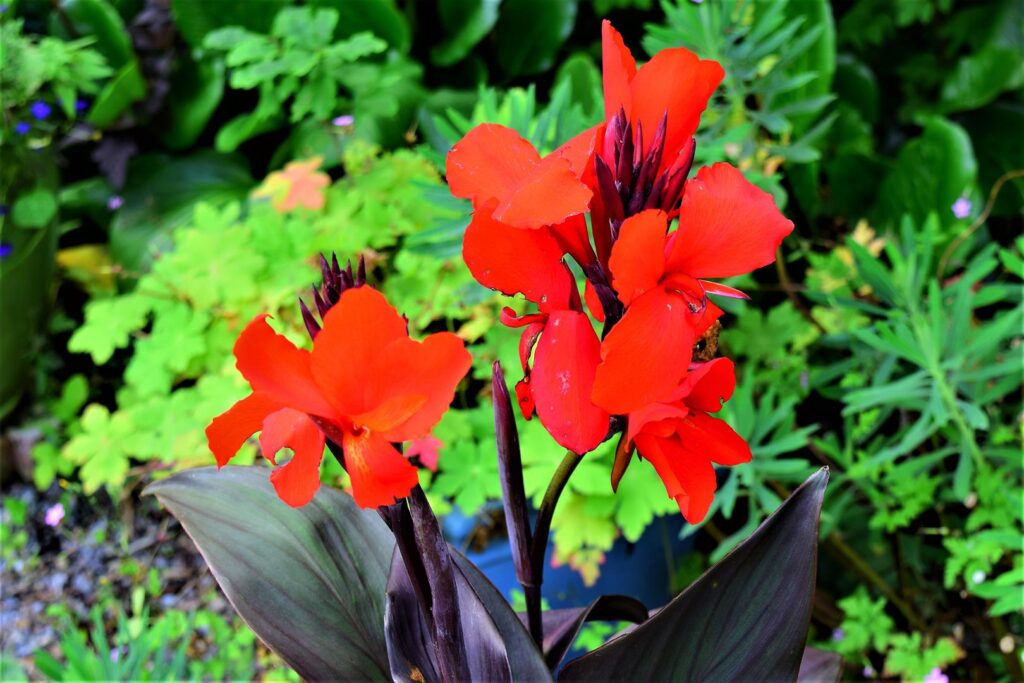
I have met the great Helen a few times , the first time six years ago when I visited her world famous former garden in Ranelagh in Dublin . I had been warned she could be grumpy enough so take her as you see her was the advice … not a bit grumpy , lovely and welcoming in fact and when I admired her giant teraplanax rex she produced a shovel and said “dig out what you need ” … and I did !
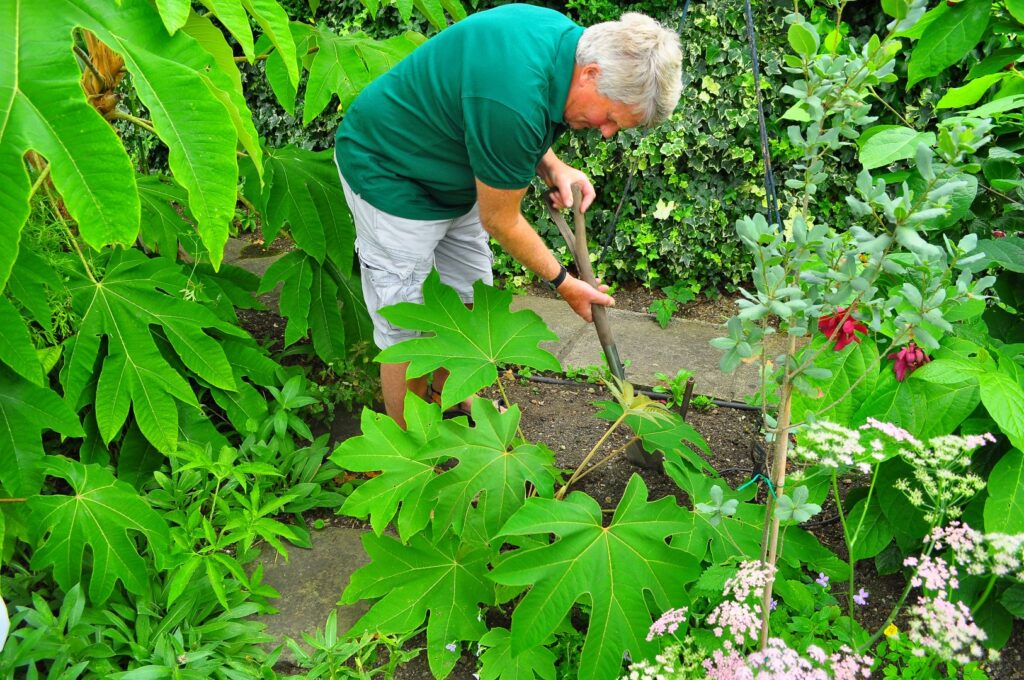

The two pots in the photo below were bought in a sale and have been in the garden for the past fifteen years but over time they have been swallowed up by the vegetation to the point that they could no longer be seen and while I always knew they were there I just never got round to reclaiming them from the rampant ground ivy and brambles that had taken them over plus I knew it would be a bugger of a job to clean off all the rogue growth … and so it was but worth the effort and almost like getting a present of two lovely pots all cleaned up and gleaming ! Finding a new position for the pair was a challenge but I tried them here outside the back door at the top of the steps leading down to the garden , a kind of a cliched naff design look I know but they worked so I can live with the naff look and next up was what to plant , the pots are in full sun all day so perhaps annuals for summer colour or maybe even hostas but decided on the more formal look of box balls and again it worked .
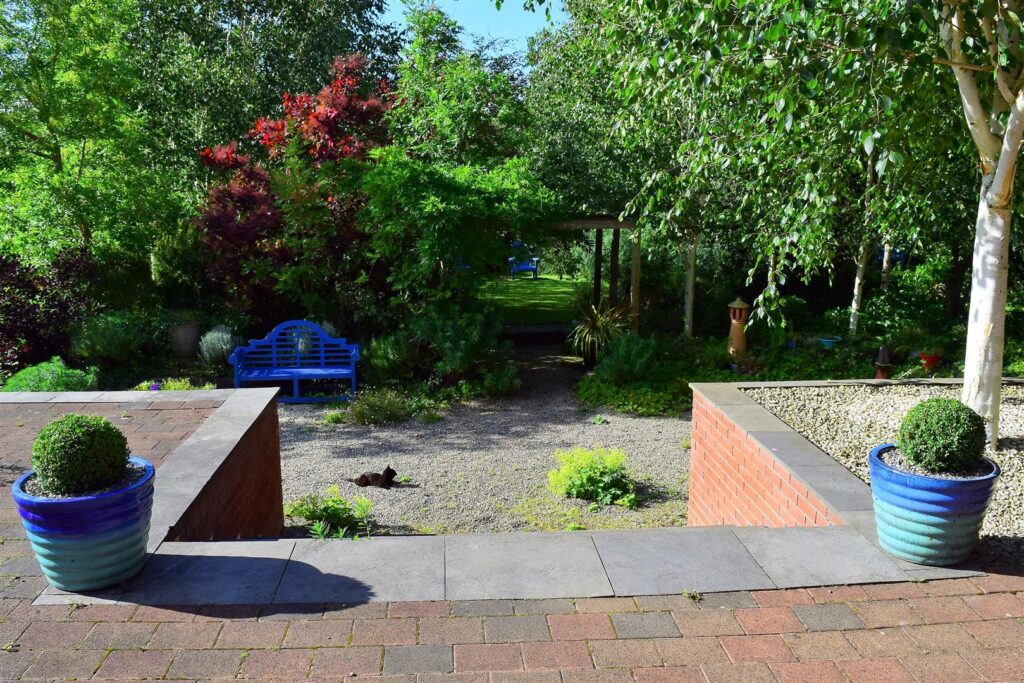
Clonmel Garden Centre has a great selection of box balls in several sizes and I opted for a middle size as the planting should not dominate the mid size pots . I used my usual mix of filling … we maintain a few stock pots filled with a mixture of earth , leaf compost , coffee grounds along with rain washed sand collected from the yard drainage channels and I use this as the standard base for all our pots and containers to which I add large pebbles and stones in the base of the pot to ensure good drainage then fill to about two thirds finished off to the top with John Innes potting compost and the final touch topped off with pea gravel after planting to suppress weeds but it also adds a nice finish .
Pots are great for patios , roof gardens , balconies and anywhere where space is limited for the normal planting beds and when I lived abroad , most of the time if I was lucky I only had a small balcony which I filled with all sorts of containers . Nowadays garden writers refer to planters rather than pots however I regard planters as long boxes suitable for a large group of flowers or plants and I still prefer to refer to pots as pots . Not letting pots dry out is the secret to growing plants in pots and regular watering is a must as even in our wet weather in Ireland pots can dry out so nothing beats a good long soak from the watering can . I find terracotta clay pots are best while ceramic pots have improved over the years to the effect that these are now just as good as the old fashioned clay pots and gone are the days when ceramic pots chipped and flaked in frost .
Plants in pots will tell you if they are suffering from drought as they will wilt to protect themselves but usually a good soak over two days will rescue them but you do need to keep an eye on them and it also helps , in fact is essential that you position them where they will be in shade for part of the day .
In this garden we have lots of space and I use pots often for dramatic effect rather than as a place for plants and with big pots there is no need to keep them filled with plants all year round as they look good enough in themselves and I grow hostas in several pots but leave them empty throughout the winter .
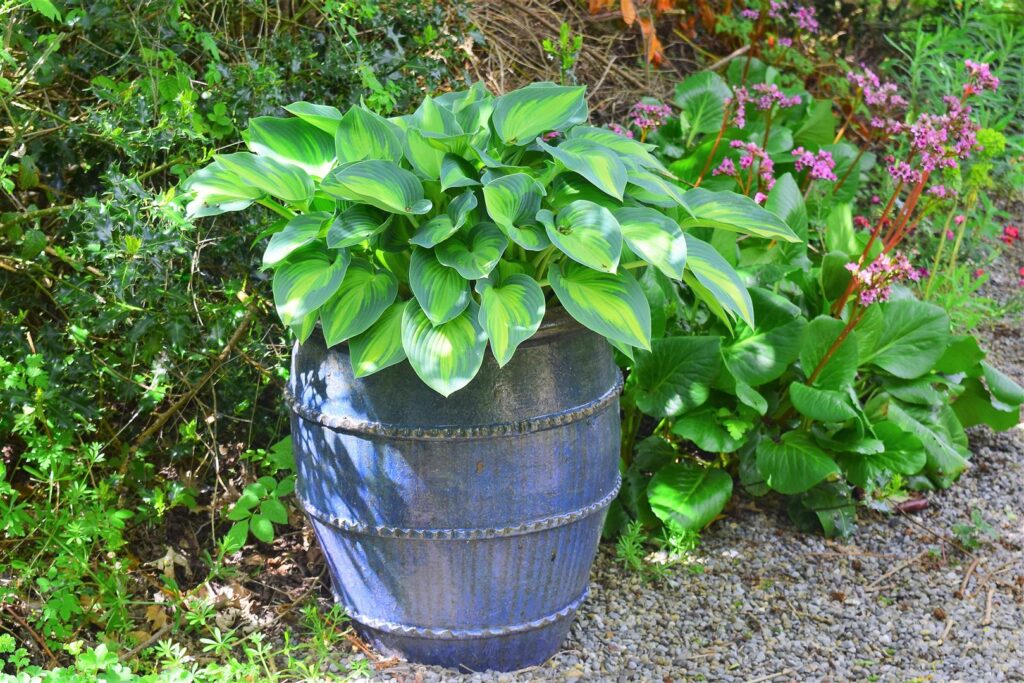
In recent posts I have featured shrubs and plants that are well known but for some reason taken for granted and not reckoned as stars of the garden and this month my spotlight falls on Alchemis Molis better known as ladie’s mantle . A gorgeous plant with evergreen leaves and beautiful sprays of yellow flowers in summer and you need only ever buy one plant of alchemis as it will self seed everywhere especially into gravel as it does here for us . I use it for front of border but it is also great for shady areas and I leave it self seed throughout our gravel areas as I love the informality of alchemis clumps and although a prolific self seeder it is never a problem as it is easily removed roots and all by sliding a spade under it and equally easy transplanting it to another part of the garden or for potting up as a gift as it takes without a problem in the new site just by adding some soil to it’s edges .
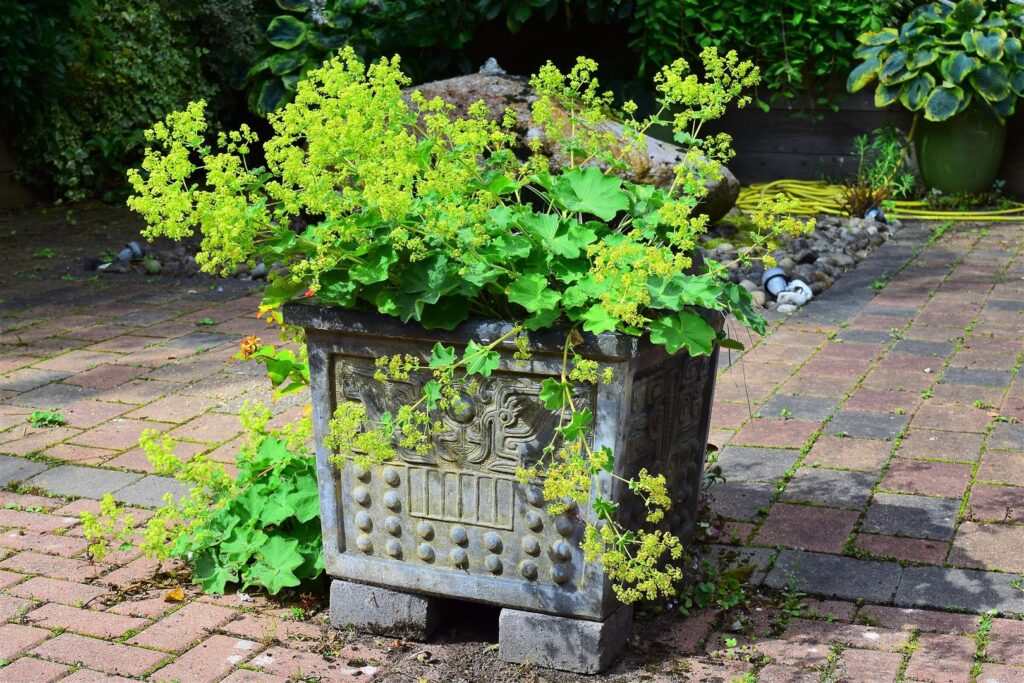
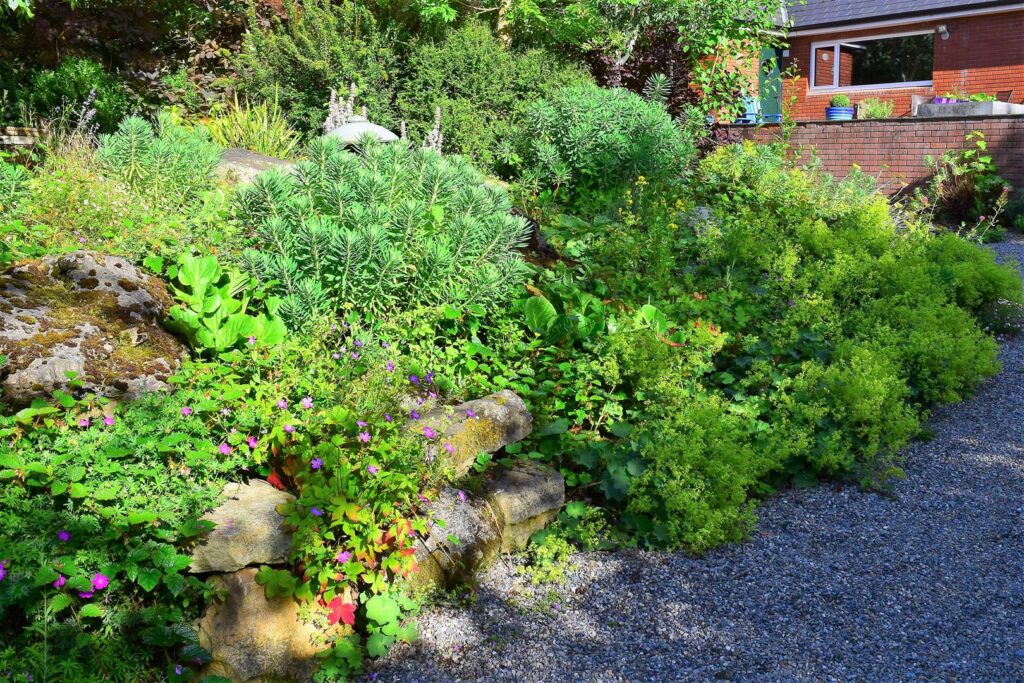
Beads of water collect on the leaves of alchemis molis that look really beautiful and I can never understand why it is not considered one of the best perennial plants … it got it’s name apparently as alchemists in the Middle Ages considered the water beads on alchemis as the purest form of water that they would use in their experiments to turn base metal into gold , closer to witchcraft really but a good story for a lovely plant !
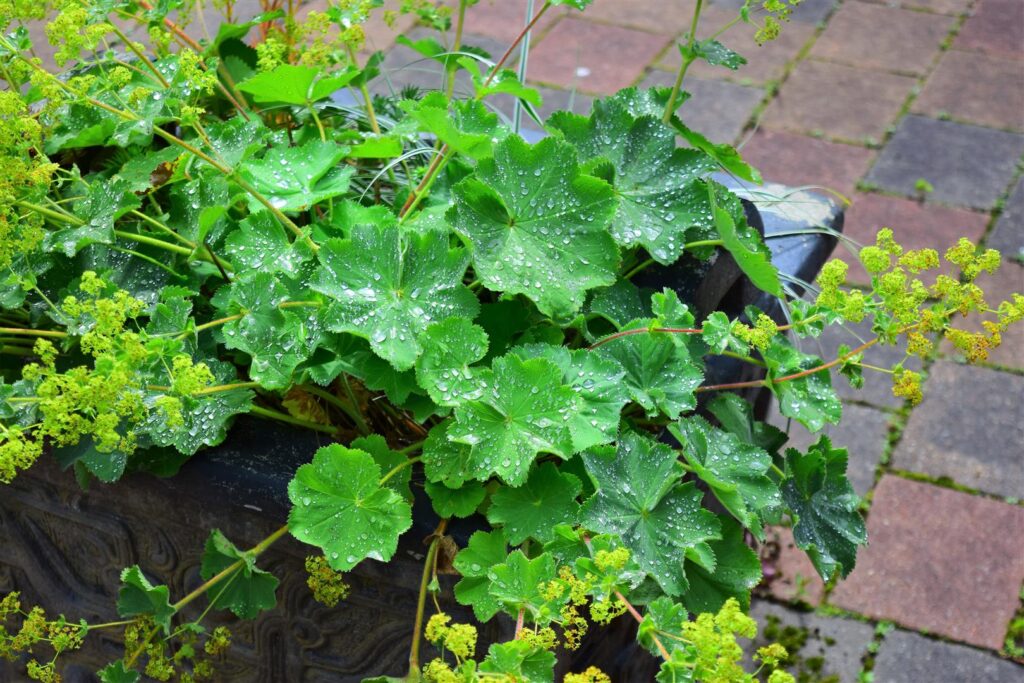
In Ireland we share a sometimes turbulent history with England and even though I come from a staunch republican background through my Father , his Father , my Grandfather , was a British army officer in WW 1 as were my four grand uncles who all believed in the British Empire … conflicted as a child ?… not a bit of it , I always loved British history however I am not blind to how the British tried to hold onto their Empire and how when forced to leave always sowed dissension and partition when it was in their foreign policy interest as they did in India in 1947 when they allowed Pakistan to break away as a future bulwark against China and Russia or here where they encouraged the Ulster Unionists to hive off the six northern counties of Ireland so they could continue to have access to the ports . But England also did a lot of good in whatever country they governed and even though individuals led or condoned huge atrocities such as Cromwell and the Black & Tans in 1920 here or General Dyer at Amritsar in India in 1919 my personal opinion is that the British Government of the day tried to do the right thing and were led by principle mostly except in South Africa where they sponsored a huge land grab but as in most cases World Empires were let down by their agents on the ground be it India or Ireland where corrupt or venal officials were allowed to administer as they saw fit and of course you only have to look at how the US behaved in Vietnam for a modern example of this and how China and Russia today treats their muslim indigenous people .
In gardening the British always led the way and still do through the Royal Horticultural Society and the annual Chelsea Flower Show dictates gardening trends each year . I have visited most of the great British gardens and my favourite gardening writers such as Christopher Llyod, Robin Lane Fox , Dan Pearson , Beth Chatto , Helen Dillon ( although we have given her honorary Irish status !) , Stephen Lacey are all British . One thing the Brits have in spades though , no gardening pun intended , is eccentricity and the garden scene is no exception and I was reminded of this last weekend when I saw that the Garden Museum in London is running an exhibition until September on Derek Jarman’s garden built on a shingle beach at Dungeness right next to a nuclear power station . Although I have never been to see the garden which is just a collection of semi wild gravel plants and herbs , flotsam wood and rocks on the beach and the wonder is that he got anything weed or not to grow in such a hostile environment . I cannot see any beauty in it apart from the sheer isolation and bleakness of the landscape … yet the Brits love it or at least the garden intelligentia do and this week Tim Richardson , author of the English Garden , named it in the Telegraph as one of the best ten coastal grdens in Britain. The property is now run by a trust set up in memory of it’s creator , the punk painter and film maker , Derek Jarman , who died in 1994. The garden is not my cup of tea and certainly not right beside a nuclear power station although I admire the tenacity of Derek Jarman for creating a garden in such a bleak adversarial place .
Jarman himself was diagnosed with AIDS just as he bought the property and lived there for only six years before he died in 1994 and I suppose living with a death sentence as it was then heightened all his artistic leanings and beliefs and in my view he went for plants that themselves were clinging on to life in such desolate surroundings but credit to the man for fighting to create a garden out of such chaos while his own life was ebbing away .

Colour in the Garden in July
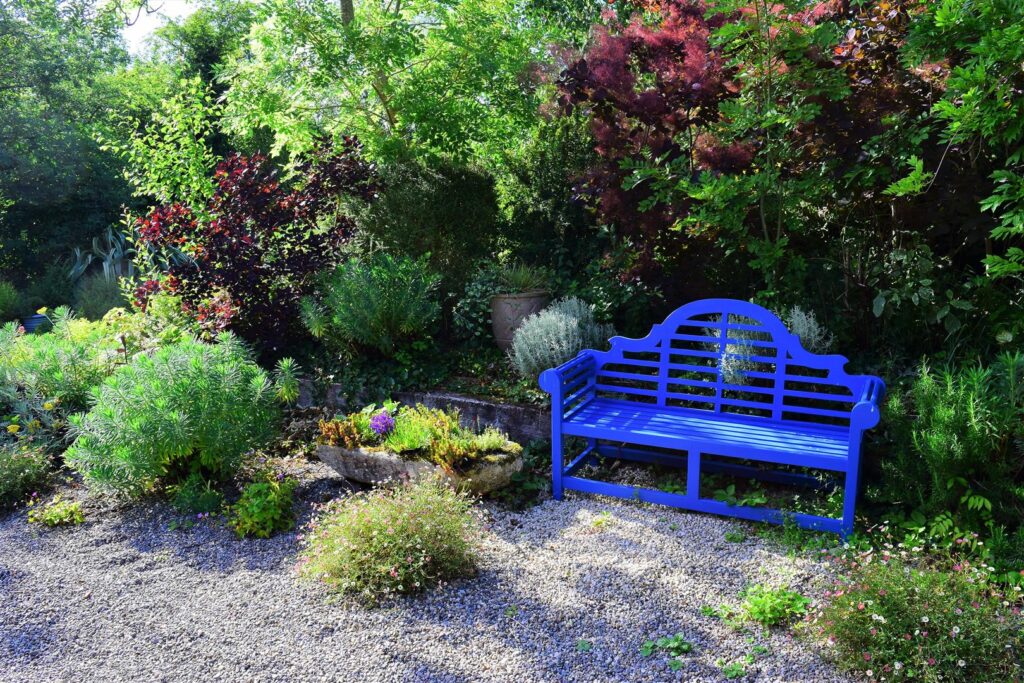
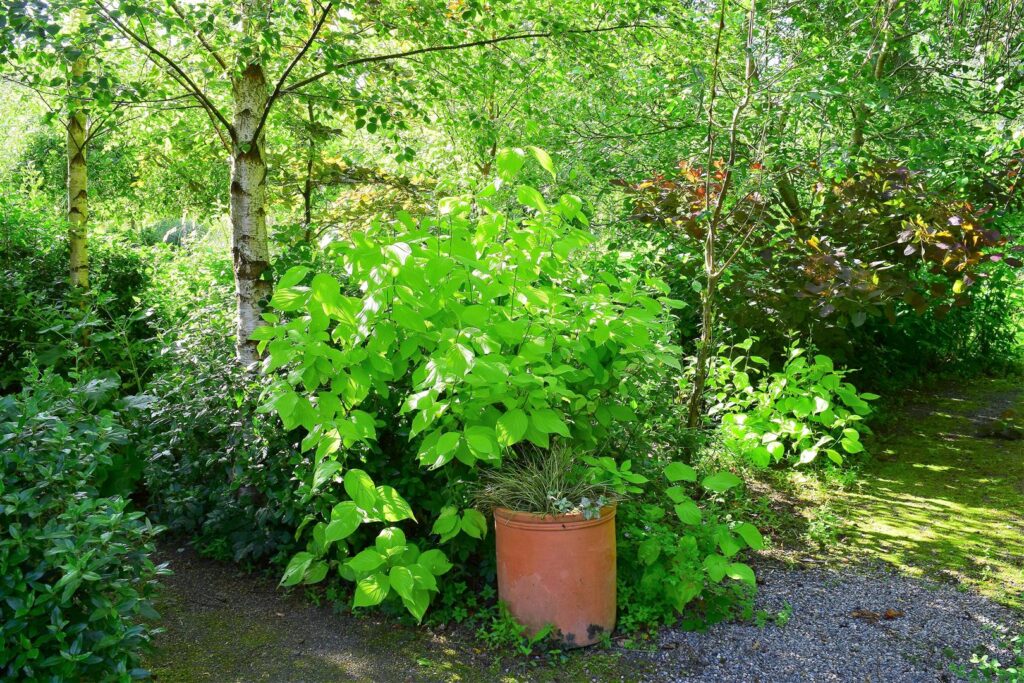
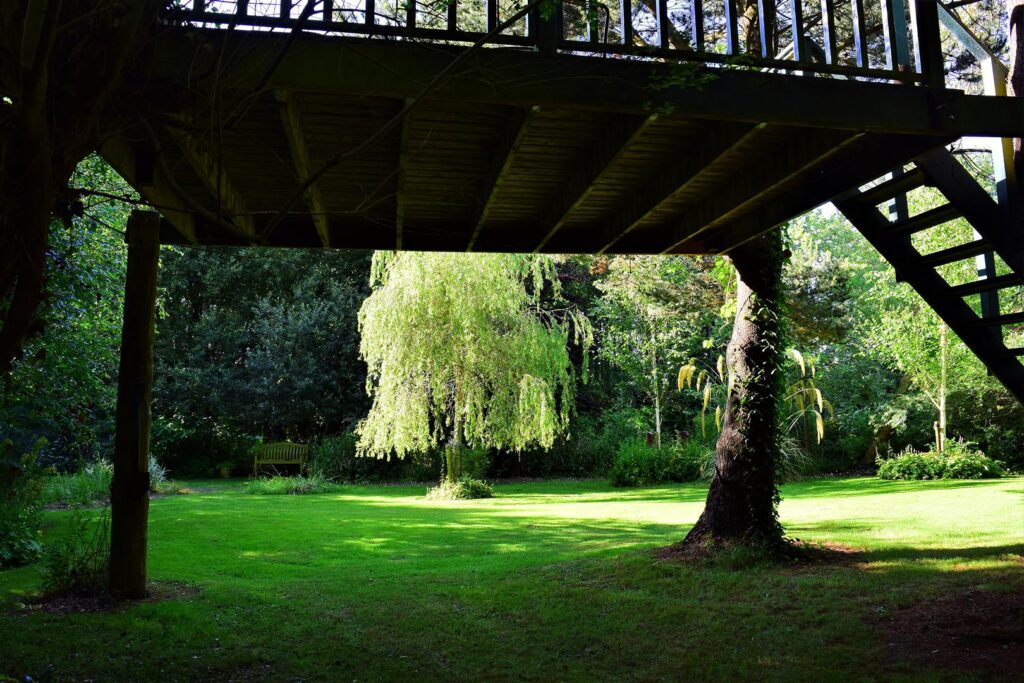
In recent blogs I have written about my experiences in Bosnia during a ten year working career there and here is this month’s extract .
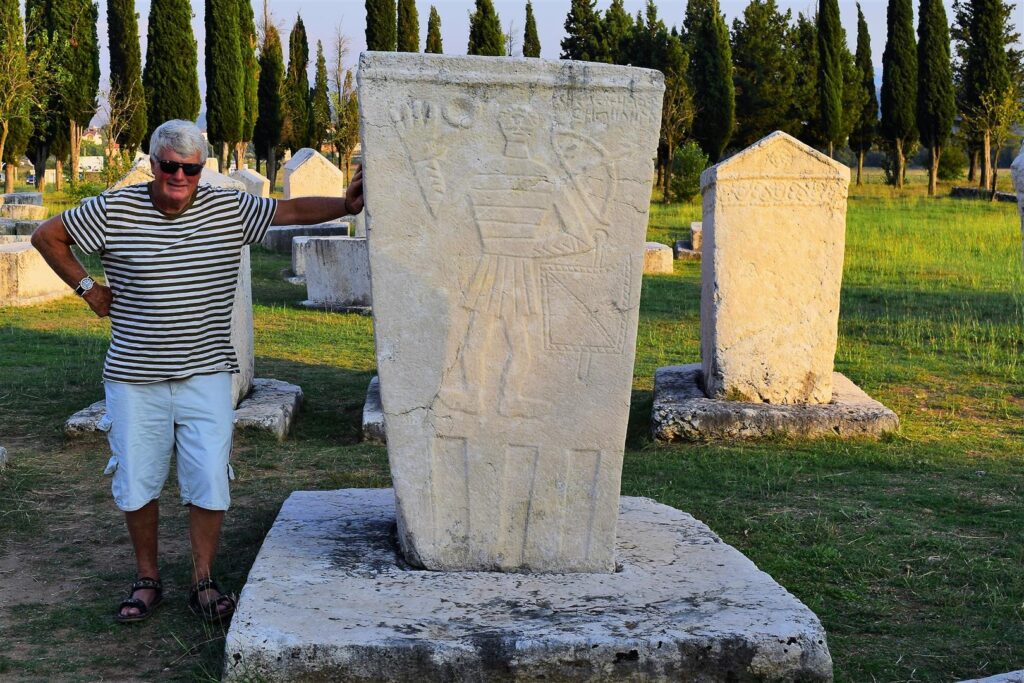
When I arrived in Bosnia with an EU mission in early March 1996 , the war was just about over but tension was high and the three ethnic groups stayed apart and did not leave their own areas and several cities , Mostar and Zvornik in particular were flashpoints that could erupt at any time , both places had seen huge suffering , ethnic cleansing and killings during the war . Zvornik was just up the river Drina from Srebrenica where 7000 Muslim men and youths were shot by Serb forces while Mostar was and is to this day a totally divided city between Croat and Muslim . Both cities were vital to the EU role in getting a customs revenue system up and running and so I had to visit each city in my first ten days in Bosnia … not a problem for me in my white diplomatic plated UN / EU type Nissan Patrol but a huge problem for our drivers and interpreters who had to accompany me to each location … all of whom were Muslim because Sarajevo under siege for the four previous years by Serb forces had few Croats or Serbs left to recruit in 1996 and looking back I can only guess how terrified they must have been to drive out into the Badlands and especially terrified to visit Zvornik but not only to visit , we had to stay overnight as well .
To the day I left Bosnia ten years later I was always uneasy visiting Serb towns along the Drina river as there was an air of menace and tension present always especially in Bijeljina , Trebinje, Zvornik and Visegrad and the anti muslim feeling was palpable .
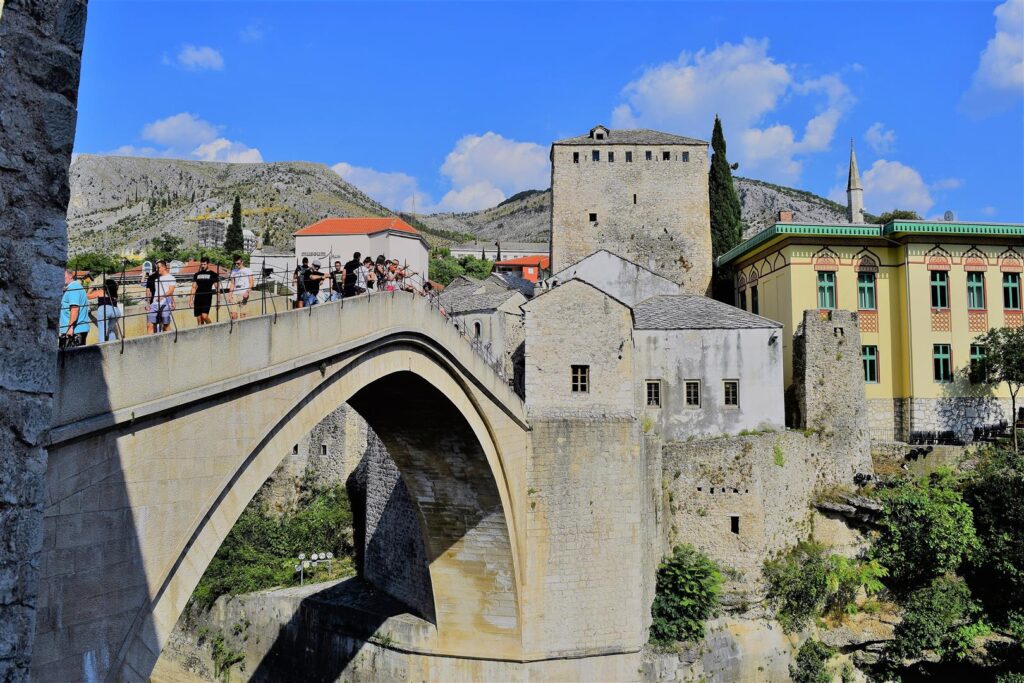
Working in the former Yugoslavia as a foreigner be it in Serbia , Croatia , Macedonia , Bosnia or Kosovo as I did , it was impossible to really understand or get to grips with the ancient hatreds between Serb , Croat , Muslim and Albanians as since the Ottoman arrival and conquest in the mid 1400’s all sides have committed terrible atrocities against each other which over 600 years has bred intolerance and ethnic hatred … we Irish think we are good at holding a grudge and remembering battles from 1690 as if they were yesterday but the Balkans have raised grudge keeping to a new level … and so we arrived in Zvornik in early March 1996 , Aldin , Kemal and Amira , all Muslims and me .
To put it in context Zwornik is just upriver on the Drina river from Srebrenica and when we visited it was just eight months after the massacre in late July 1995 and the Serb paramilitaries were with an army of mechanical diggers frantically moving the mass graves of the 7000 dead around to conceal the evidence from the UN investigators so the local Zvornik people who all knew what had gone on in Srebrenica were now highly suspicious of our visit .
We were treated well and hospitably as always by the local Serb customs officers and made to feel very welcome but the staff at Hotel Zvornik were another breed , tough hard bitten looking men who made no secret of their dislike that the EU Mission was bringing Muslims back to “their ” town , these nationalistic Serbs were and are awful people who will openly tell you they can “smell ” muslims and Hotel Zvornik staff in 1996 were on top anti muslim form … the hotel was a typical communist era concrete build , shabby and down at heel with shell marks on the walls and I always remember the neat row of bullet holes across the large dining room window while the dinner menu had only the one main dish , muskalica , a bosnian stew which is traditionally made of a non offensive meat such as mutton or beef but the waiter took particular delight when discussing it with Aldin that their muskalica was PORK and that it was the only dish on offer for dinner , so we all ordered the muskalica sensing that this waiter was itching for a confrontation and keenly aware that we were also being watched by a rough looking all male clientele … when the waiter came back with the muskalica dishes he slapped it on the table in front of each of us and then stood watching , Aldin took up a spoon and brought it to his lips which brought a horrified whisper from the driver … Aldin it’s pork … to which Aldin rising pragmatically to the occaision and knowing this was no time for suicide looked sideways at him and in a loud voice replied EAT IT !
Thanks to Aldin I survived that first visit to Zvornik and my career in Bosnia continued for the next ten years !
I leave you here for this month with a photo of a favourite spot for me in our garden in a corner of the woodland area .
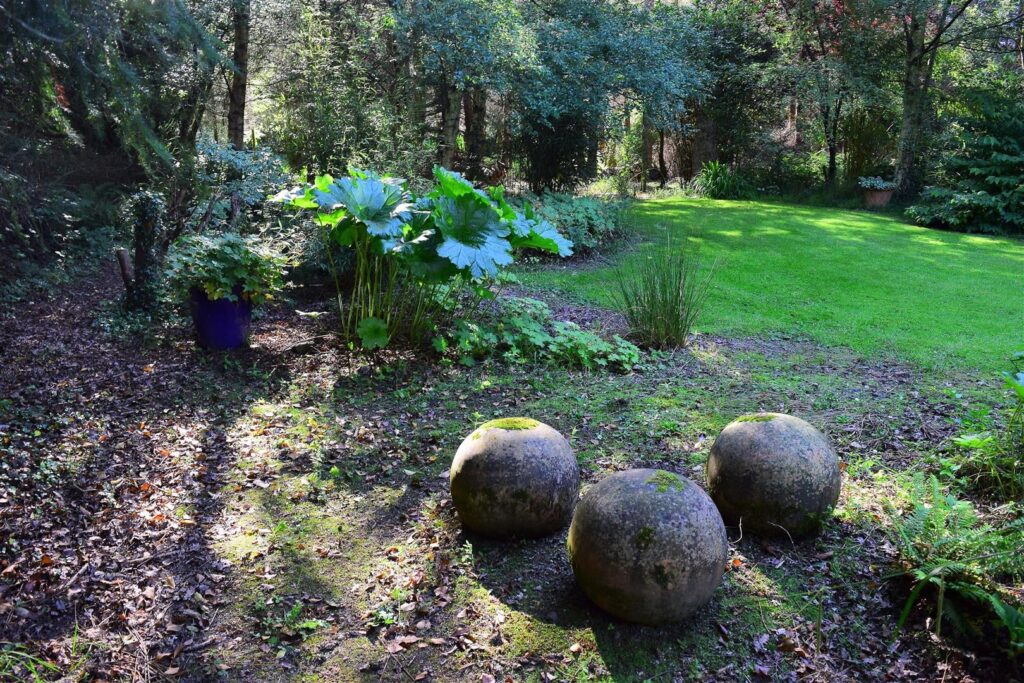


Leave a Reply